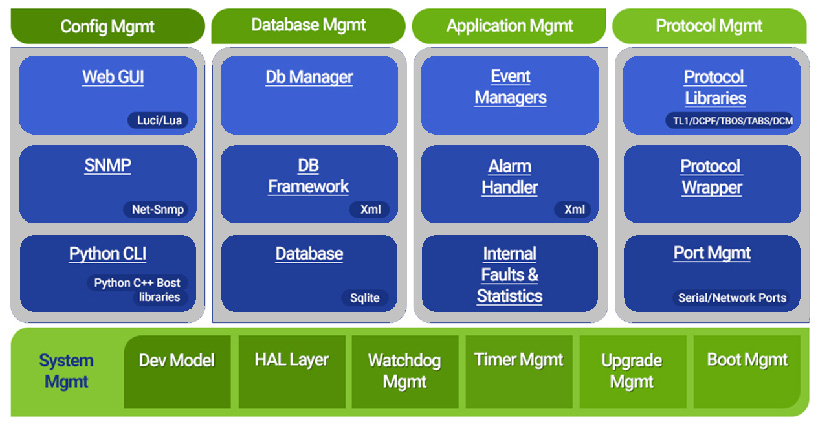Code Refactoring for a remote monitoring solution

A leader in remote monitoring and network management solution in North America was experiencing high maintenance cost in supporting different hardware variants for their monitoring solution. The customer was looking for a partner to make the maintenance and future feature upgrades at an optimized schedule and cost.
Solution Description
Refactoring
- Gadgeon re-architected the existing software stack to cater to all variants of the customer’s product family and used Embedded Linux, C++, Luci/ Lua
- System management will read the hardware variant and generate a data model based on the number of IO points in the system.
- Remote Firmware upgrade including the rootfs, os and application. Primary and secondary boot partitions for fail safe upgrade.
- Multiple boot options with priorities (primary, secondary or USB)
Configuration Management
- Developed a unified configuration management interface to support CLI, Web GUI and SNMP V2/V3.
Outcome and Benefits Delivered
Outcome:
- Any feature on any hardware platform made a reality with otimal schedule and cost on the newly refcatored sotfware stack.
- Unified Monitoring and Alarm handling system implemented based on reusable database models
- Unified Configuration management supports Web GUI, CLI, and SNMP V2/V3
- IP security features compliant with Federal Standards
Benefits:
- 60% saving in total cost of ownership for supporting different hardware variants on the newly refcatored software stack.
System Architecture Description
Application Management
Event managers, Event generation/notification, Alarm Handler, Internal Faults and Statistics. POCO libraries for thread handling and notification between threads.
Protocol Management
Protocol libraries for TL1, TBOS, TABS,DCP/F, DCM, Port handling, Protocol Wrapper, Client proprietary protocols
Device Security
System boots only if pre-calculated checksum stored in EEPROM matches with file system checksum. Security enhancement with Ip tables, restricting port access, IP filters used for restricting source IP addresses.

Code Refactoring for the Project
Main Challenges
- Mix of C and C++ code, 11 C++ libraries had to be integrated, as well as legacy C++ code.
- Hardware interaction was in multiple places
- Multiple functionalities as part of single module
- Header files were not organized properly
- Object oriented concepts were not followed
- Multiple hardware variants having similar code was spread across two branches
- Maintenance was difficult as modularization was not followed
- DB was accessed haphazardly from all interfaces
- Business logic was scattered across the code base.
- Above 150K LOCs
Refactoring approach implemented
- Converted all code to C++11 after proper object oriented design
- Hardware interaction concentrated into a single module, interfaces defined
- Singleton pattern brought in, and similar functionality grouped together
- Base classes were defined to bring in common functionality, and diversions made into derived classes
- Single compilation with defines for separate hardware variants
- Modularization of code strictly followed
- A framework defined for DB handling to unify external interfaces.
- Business logic put in concentrated places
- Proper thread handling and critical sections defined using mutexes


